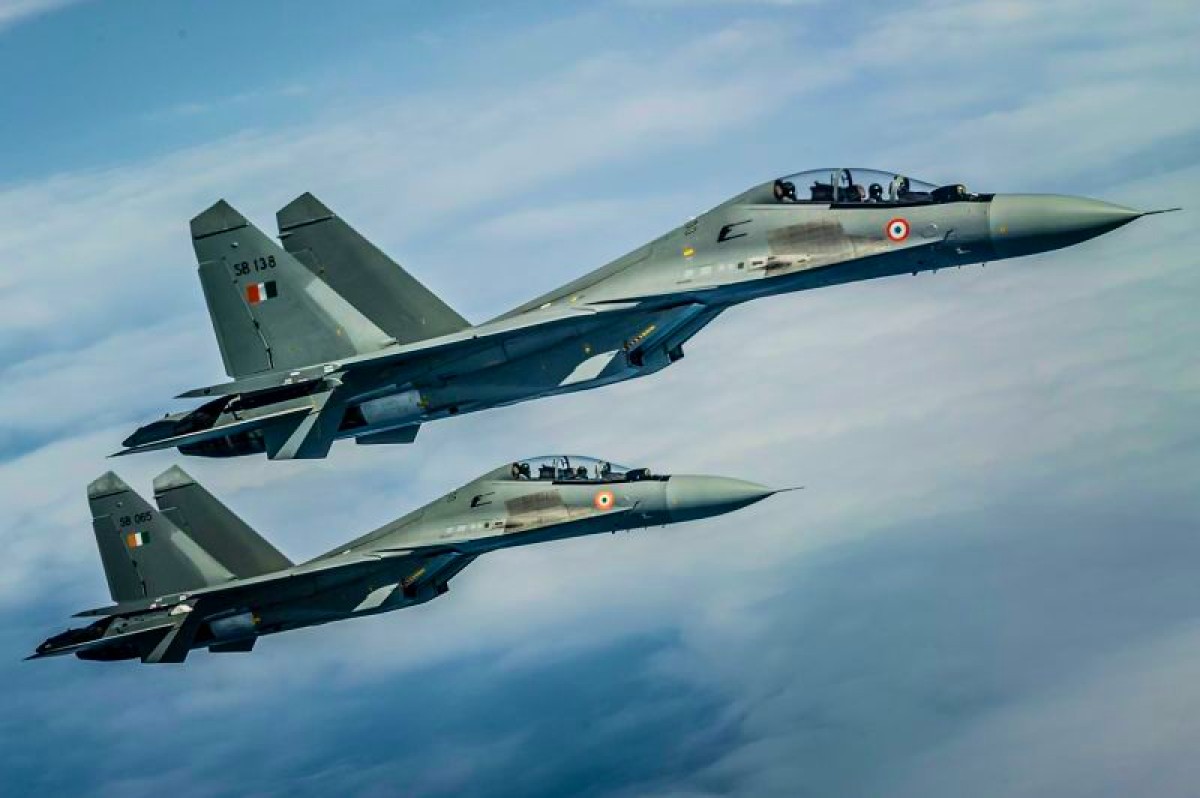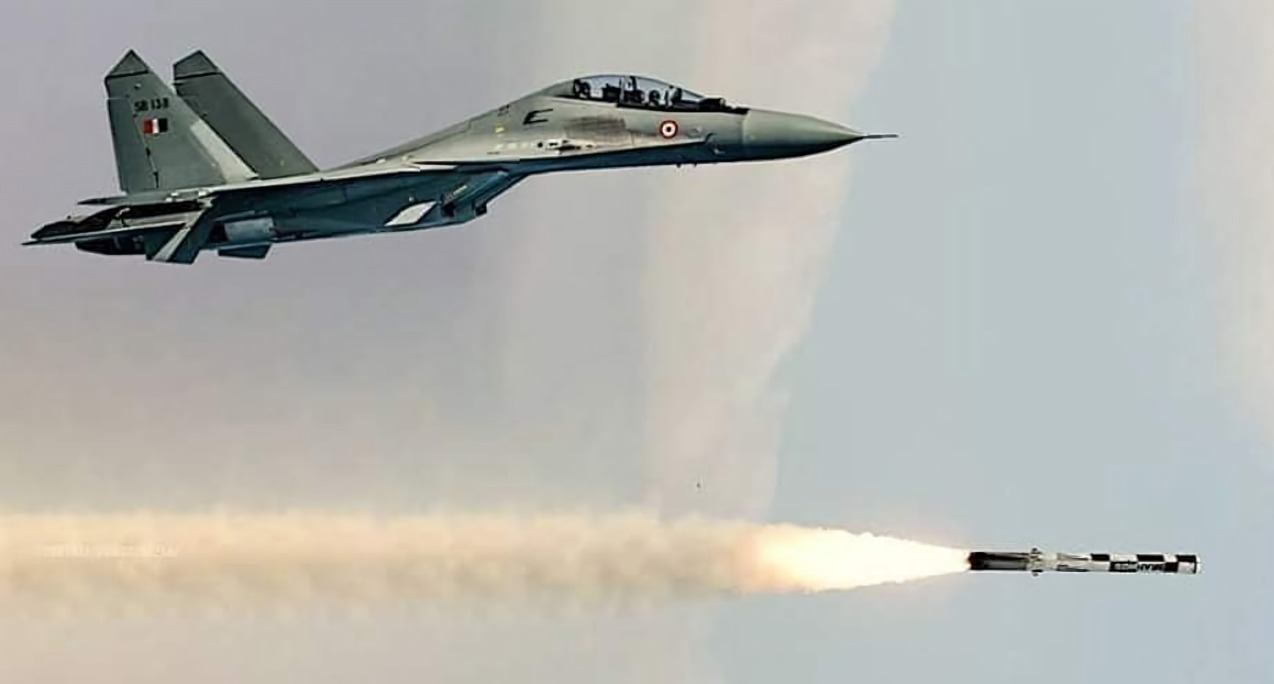India To Modify Su-30 MKI Into “5th-Gen” Fighters Sans Stealth; Plans A Whopping $7.5B Modernization Drive

The Indian Defense Ministry has reportedly finalized a draft note for the approval of the Prime Minister-led Committee on Security (CCS) to upgrade the first batch of Sukhoi-30MKI fighter jets.
The ambitious plan, estimated at around Rs 63,000 crore ($7.5 billion), aims to significantly enhance the capabilities of Russian-origin Su-30 MKI aircraft, making them much more lethal for modern air combat.
The upgrade initiative will include integrating advanced technologies such as enhanced radars, avionics systems, longer-range weapons, and multi-sensor fusion capabilities while excluding engine enhancements.
AfriPrime App link: FREE to download...
https://www.amazon.com/Africircle-AfriPrime/dp/B0D2M3F2JT
The Times of India report said that the extensive modernization efforts will initially be applied to 84 fighter jets, ensuring their operational viability for the next 30 years.
This development follows the Defence Acquisition Council (DAC), the highest decision-making body within the Defence Ministry, granting Acceptance of Necessity (AoN) for the modernization of the Indian Air Force’s (IAF) Su-30MKIs by Hindustan Aeronautics Limited (HAL) on November 30, 2023.
The upgrade is crucial as the IAF is currently operating at just 30 fighter squadrons, significantly below the authorized strength of 42, which is necessary to adequately deter threats from both China and Pakistan.
This shortfall has heightened the urgency to enhance the capabilities of existing fleets, particularly the Su-30MKI, which forms the backbone of the IAF’s combat fleet.
According to reports, the ongoing phased retirement of the MiG-21 Bisons has already necessitated an increased operational load on the Su-30MKIs to cover the gaps left by decommissioned aircraft. This increased usage has heightened the wear and tear on these jets.
The IAF currently operates 259 Sukhoi jets, most of which have been license-produced by Hindustan Aeronautics Limited (HAL) at a cost of over $12 billion. To maintain fleet strength, an additional 12 new Sukhois are being ordered to replace those lost in crashes over the years.
The comprehensive upgrade, to be executed by HAL, will span approximately 15 years. After receiving the CCS sanction, development work, and flight testing are projected to take seven years, followed by a progressive upgrade and induction of jets in batches.
Nearly A 5th-Gen Warplane – Expert
Rahul Manohar Yelwe, a Senior Research Fellow at the Center for Security Studies, told EurAsian Times that the new upgrade will encompass state-of-the-art avionics, sensors, weapon integration, electronic warfare capabilities, network-centric warfare capabilities, and enhanced data fusion technologies.
Yelwe added that the ongoing upgrade initiative will equip Sukhois with the Indigenous ‘Virupaksha’ advanced electronically scanned array (AESA) radars. These radars will significantly boost the detection range by “1.5 to 1.7 times” over the current Russian-made radars.
AfriPrime App link: FREE to download...
https://www.amazon.com/Africircle-AfriPrime/dp/B0D2M3F2JT
The upgraded ‘Super’ Sukhois are expected to be close to fifth-generation fighter capabilities, with the exception of stealth features.
According to the report, these advanced Sukhois will incorporate manned-unmanned teaming capabilities, allowing them to operate in concert with autonomous drones using AI and data links to enhance mission effectiveness.
Yelwe highlighted that the Su-30’s two-seat configuration makes it well-suited for incorporating manned-unmanned teaming capabilities. However, he said that no one has demonstrated this technology in practice yet, and it will likely take many years before it can be successfully implemented.
Su-30MKI Upgrade Plan Sans Engine Enhancement
The Indian Air Force (IAF) has opted not to include an upgrade to the Su-30MKI’s engines as part of its extensive modernization plan, despite persistent proposals from Moscow to integrate the advanced AL-41F-S1 engine.
For instance, in February 2017, Alexander Artyukhov, then CEO of the Russian United Engine Corporation, suggested that the Indian version of the Su-30MKI could benefit from the AL-41F turbofan engines designed for 4++ generation aircraft.
The upgraded engine is an improved variant of the AL-41F-1S engine, designed to enhance the performance of the Su-30MKI fighter jets.
The AL-41F-S1 engine offers significant advancements over the current AL-31FP engine used in the Su-30MKI. It provides a 16% boost in maximum thrust, reaching 14,500 kgf (kilogram-force), and doubles the engine’s service life to 4,000 hours, maintaining the same weight and dimensions.
Additionally, the new engine enhances electrical power generation capabilities, facilitating the integration of more advanced radar and electronic warfare systems.

This, according to the EurAsian Times, could extend the Su-30’s detection range for both aerial and ground targets, a feature that would be of significant interest to the IAF.
However, the decision to exclude the engine upgrade might stem from ongoing integration trials of the AL-41F-S1 engine. Currently, the Su-30SM2 variants delivered to Russian forces are equipped with the AL-31FP engines, and the new engine will only begin to be delivered with the Su-30SM model fighters starting in 2025.
Rahul Manohar Yelwe said that upgrading the Su-30MKI with a new engine would require extensive testing. He also questioned Russia’s ability to supply these engines, given its ongoing involvement in the Ukraine war and the heavy sanctions imposed by Western countries.
Although the Indian Air Force is not currently planning an engine upgrade for the Su-30MKI, Yelwe examined the potential ramifications if such a decision were made.
He noted that the Tejas light combat aircraft (LCA Mk-1A) program is already experiencing delays due to issues with the supply of F404 engines from GE Aerospace.
Yelwe stated that should the IAF decide to proceed with an engine upgrade for the Su-30MKI, challenges could arise if Russia, already burdened by its ongoing conflict with Ukraine, fails to deliver the engines on schedule.
This scenario could lead to a situation in which a key portion of the IAF’s fighter fleet spends more time on the ground rather than in the air, thereby affecting overall operational readiness.
Yelwe further noted that replacing the engines would impose a significant financial burden on the Indian Air Force. He cited the example of the Indian Air Force’s Jaguar fighter fleet, which was initially set to receive upgraded Honeywell F-125IN engines for enhanced performance.

However, in 2019, the Indian Air Force decided to abandon this plan. The upgrade involved fitting 80 Jaguar ground-attack fighters with 280 new Honeywell-built F-125IN turbofan engines. The decision to cancel the upgrade was driven by the high cost of approximately $2.4 billion, which was deemed prohibitively expensive.
Yelwe further pointed out that most of the existing Su-30 engines are license-manufactured in India, which suggests that many of the engine’s components, aside from the core, might have been indigenously produced by now.
This local production likely facilitates easier serviceability and maintenance of the engines, streamlining upkeep and reducing reliance on external suppliers.
He also explained that the planned upgrades of Su-30s will likely be applied to a little more than half of the fleet, excluding aircraft that have already surpassed 60-70% of their service lives. This approach aims to maximize the benefits of the upgrades while effectively managing costs.
In a similar line, Vijainder K Thakur, a veteran IAF pilot with expertise in the Russian and Indian defense sectors, previously highlighted that the IAF’s choice to proceed without the engine upgrade could be driven by a desire to manage costs and the emphasis on beyond-visual-range (BVR) combat.
In this context, supermaneuvrability—enhanced by the new engine—may not be deemed as critical as other aspects of the aircraft’s combat capabilities.
Yelwe pointed out that while India is not replacing the engine, it might opt for the Gallium Nitride (GaN)-based AESA radar, which has very low power consumption and helps double the jet’s detection distance.
AfriPrime App link: FREE to download...
- Questions and Answers
- Opinion
- Story/Motivational/Inspiring
- Technology
- Art
- Causes
- Crafts
- Dance
- Drinks
- Film/Movie
- Fitness
- Food
- Jogos
- Gardening
- Health
- Início
- Literature
- Music
- Networking
- Outro
- Party
- Religion
- Shopping
- Sports
- Theater
- Wellness
- News
- Culture
- War machines and policy

